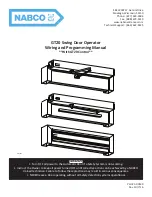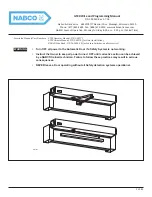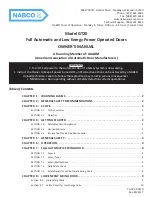
Planning, Installation, Maintenance and Operating Instructions
dw
62-2 ME Sliding Doors
- 8 -
Fixing equipment for wall seals and counterweight
For concrete:
- Use Ø12mm expansion anchor; (Ø12mm drill bit, min. drilling depth 50mm)
- Use M10 heavy duty anchor; (Ø10mm drill bit, min. drilling depth 80mm)
For masonry:
- Use Ø12mm synthetic plug; 135mm long; (Ø12mm drill bit, min. drilling depth
150mm)
For autoclaved aerated concrete: - Use M12 through bolts
7.3 Runner Rail Assembly
-
Use a cloth soaked in resin-free oil to clean
the inside of the runner rail
-
For wall mounting:
Fix the sleeves to the brackets and align.
Insert the runner rail into the sleeves.
Attach the runner rail and the sleeves
at the same time if there is a shortage of space.
-
For ceiling mounting
Insert the runner rail into the ceiling mounting sleeves.
Attach the runner rail and the sleeves
at the same time if there is a shortage of space
Use a connection sleeve (1)
to interconnect several runner rails.
Runner rail arrangement for weight arrangement
7.4 Hanging the Door Leaves and Roller Mechanism
-
Screw the carrier bar into the bore hole in the door leaf
-
Insert the roller mechanism into the runner rail
-
Place the door leaf underneath the roller mechanism
-
Screw together the roller mechanism and the carrier bar.
Adjust to the correct height to ensure precise running of the roller
mechanism by screwing the carrier bar in the door leaf clockwise
or anti-clockwise (minimum screw-in depth of the carrier bar = 25mm)
The roller mechanism can be completely screwed into the door leaf
for larger spaces. Subsequently insert the door leaf together with the
roller mechanism into the runner rail from the rear. For doors
with counterweight balance at the first roller mechanism, as viewed from the
closing side, attach the metal clip for the traction rope complete
with rope when screwing in the carrier bar.









































